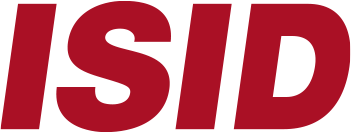All products that deal with data are evolving towards the cloud, as it is becoming the central hub for data processing, due to its particular characteristics of decentralization and flexibility. At ISID we have created the evolution of Videoma for the cloud: Videoma Cloud. With all the benefits for the client that this entails.
Cloud Services…yes or no?
Even today, there is still a certain reluctance to use some cloud services. Sometimes it is due to mistrust regarding data security or even some “fear” of losing control of where the information is. But cloud service providers have evolved in recent years and many of the past problems are now history. Now all the major platforms have outgrown the growing pains, are stable, secure and scalable without a problem. And there are so many of them that you can choose the one that suits you best.
Moreover, according to a Forbes study, more than 90% of companies not only use cloud, but have multiple platforms in the cloud and distribute their data among them. This means that the aforementioned reluctance is on the decline and, in the end, technology ends up sweeping us away, whether we want it to or not, due to the clear advantages offered by the cloud.
For this reason, at ISID we already have our products with their corresponding cloud version, as is the case of Videoma. Our massive video ingestion, analysis and archiving platform is the perfect example of how cloud technologies can support systems that originated on local servers, opening up a whole world of possibilities. Below we have put together the 10 most important reasons why the move to a cloud based DAM (Digital Asset Management) like Videoma and what advantages can be gained by moving to the cloud.

Top 10 advantages of cloud video analysis, processing and archiving

Cloud Media Management systems such as Videoma (which is a DAM or MAM) require two key elements for their operation: processing power for video analysis and metadata extraction, as well as a large amount of storage space to store video files that, in themselves, tend to take up quite a lot of space. And these two factors are what drove us to create Videoma Cloud, since the cloud technology itself provides us with both pillars in a flexible and dynamic way, with total control over how much power or space can be allocated to the platform at any given time. On top of that, the following are additional advantages the cloud provides:
1. Flexibility. Having a video processing, analysis and storage system in the cloud, such as Videoma, offers much more flexibility than using a local server. The mere fact that cloud platforms already have to comply with certain security and legal regulations allows you to concentrate on your business and not on the video processing hardware platforms you need. This flexibility also materializes in automatic scaling, hardware independence and other details that you will see in the following points.
2. Cost savings. One of the main arguments for having video or data processing platforms in the cloud is that the cost is directly proportional to usage. In the case of on-premise installations, these require a hardware that has to be adequately sized, taking into account the average workload and possible peaks. This means that there will always be spare hardware capacity “just in case”. Or, put another way, that capacity has been paid for and is only used from time to time. And if there is ever a peak workload that exceeds the capacity of the installation, one of the processes will be delayed, because it will have to wait for its turn.
With cloud, none of this happens. Because cloud systems can be scaled up and down, you can always have exactly the video processing power you need. And pay only for that. If you normally only use the system at 20% load, the bill will be for that 20%. But if, on occasion, you need 500% because a large batch of videos has just arrived and you need to process them as soon as possible, that is no problem as well. New instances are added to ensure speed of operation. And you only pay for them, as long as they are used. When they are no longer needed, the processed data is saved and unnecessary instances are deleted. All of this automatically, from the cloud control panel.
3. Security. As we have already mentioned, security is a major issue today, but the main cloud platforms have already solved it, because it is an intrinsic part of their business. The fear that many people have of losing control over their data if it is not on a local hard disk is unfounded, since all cloud platforms use encryption for stored data and use secure connections for all data in transit. In fact, one of the jobs of the cloud provider is to ensure that this is the case 24/7. Therefore, the video material that Videoma processes is secure in the cloud.
4. Automatic updates. In an on-premise system it is necessary to be aware of updates of the operating system, software and hardware so that everything works correctly. Drivers, memory upgrades, component replacement… all of this disappears with the cloud. It is the cloud provider who makes sure that everything is up to date and works correctly. Both hardware and software. And we at ISID take care of the Videoma core, which we always keep up to date and optimized. This saves the customer from needing an IT department.
5. Mobility. In this case, the term “mobility” refers to two aspects: on one hand, cloud systems allow easier access from mobile devices, since a browser is usually enough to use them and all security aspects are controlled by the cloud provider. However, there is another very interesting issue for the customer: mobility between cloud service providers. A cloud based MAM, if it is containerized, can be moved seamlessly from Amazon to Azure or any other provider, if necessary. In just a couple of minutes.
6. Collaboration. The ubiquitous access mentioned in the previous point is also an advantage when it comes to encouraging collaboration between work teams in the company. With Videoma in the cloud it is possible to collaborate easily, even from mobile devices, and upload videos, share information or work on the same project. And another advantage is file deduplication. By having physical servers in several locations, it is very possible to duplicate files, wasting unnecessary space and resources. In the cloud all this does not happen, since there is a single large “data lake”.


7. Control. Having a cloud platform offers a type of control that is not easily possible in on-premise installations. From the provider’s control panel we will have access to all aspects of the platform, we will be able to supervise the workload, create settings, give user permissions, obtain reports, etc.
8. Integrity. Although this section also belongs to the security area, by having a cloud service we are better protected in the event of disasters or system failures. Cloud providers perform redundant backups and in 20% of disaster cases, the system is up and running again within 4 hours. In on-premise systems this percentage drops to 9%.
9. Competitive advantage. Most of the above points, combined, offer a clear competitive advantage over customers using on-premise video analytics systems, as they do not have the flexibility of growth, connection, or the intrinsic security of cloud systems.
10. Sustainability. This issue, which is very important today, is also solved by using cloud providers. All of them use data centers that are as sustainable as possible, many of them powered by renewable energy, and participate in recycling programs for the hardware that is being replaced. These initiatives are costly for any SMB to undertake personally, both in terms of personnel and time. By using the cloud, all those concerns disappear.
Conclusion
The concepts of SaaS (Software as a Service) and cloud are inextricably linked and are the future of massive data computing. Creating a local platform for video analytics, with a few exceptions, is an anachronism. Why limit yourself to processing and storage capacity, when you can have much more or much less, as needed at any given moment? Although Videoma Cloud does not yet use the SaaS model, it is a cloud application that can offer you all the advantages of the cloud. Full access from anywhere, any device, any time.
